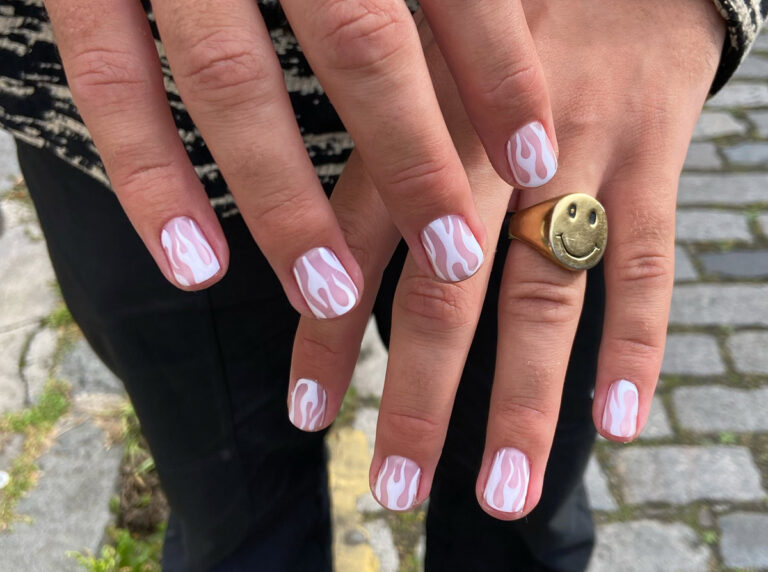Male manicures are redefining gender-neutral beauty one coat at a time
“Men don’t go for manicures, they bite their nails with their teeth,” read a semi-popular joke back in the early 2000s. Paired with memes featuring belt grinders and sanding machines for nail files, males who did their nails back then were condemned as ‘feminine’ for caring too much about their appearance. If not the former, they were perceived as ‘rebellious’ and associated with subcultures like punk and emo to justify their masculine adaptations.
Then came the entire ‘high-maintenance’ narrative for embellished talons in the dating pool. “It’s all way over the top for my taste,” Allure wrote back in 2012, explaining how women are typically attracted to those who take care of themselves but beauty products like nail polishes loops a man into the hyper-sensitive and demanding territory. “If I have to wait for his polish to dry before we go to dinner, I’m out of there,” the publication added. Catapulting to an era rooted in gender reflection and fluidity, manicures are now being adopted as Morse code for self-expression. Be it dipped or chipped, stickered or stenciled, masculine-presenting people are flirting with stigmas worldwide to push 2021 into the forefront as the official year of the men-icure.
The rise and rise of male manicures
In 2016, Harry Styles jumped into the nail polish pool—coincidentally around the same time he made a bedazzled exit from One Direction—and willingly signed himself up to rewrite the rules of masculinity on his terms. From sporting headline-grabbing smiley faces to unveiling official album art with his digits, the singer was quickly followed by Lil Nas X and Machine Gun Kelly (MGK). While the former has proven diamonds to be a man’s best friend on multiple occasions, the latter has ventured into the alleged ‘no man’s land’ of stiletto nails. Heck, MGK even has fan pages dedicated to his hands, and ultimately, his manicures.
The trio is not alone. Celebrities including Brad Pitt, Johnny Depp, Jared Leto, Troye Sivan, A$AP Rocky and Bad Bunny have successfully demonstrated a societal shift away from gender stereotypes in beauty over the past few years. In fact, these stars are not only embellishing their day with nail art, but are also launching their own brands and collections—starting with MGK’s unisex nail polish line called UN/DN, in collaboration with Unlisted Brand Lab.
Lil Yachty’s Crete is yet another brand on the list. Founded in May 2021, Crete is committed to “redefining the perceptions around gender norms and working towards breaking free from societal boundaries,” according to its official website. Ever since its launch, the rapper has released two more collections, namely Heatwave 002 and Glow 003. Encased with signature nail pens for easier application, they include red, orange, purple, blue and green polish as well as stickers with patterns like butterflies, smiley faces and lightning bolts. With Chanel launching its own male nail polish line and American blogger and host Jonathan Van Ness making history as the first male ambassador for Essie nail polish, manicures seem to have stepped off the stage and evidently bled onto everyone’s nail beds as of late.
For 64 year-old Duke, the initiation came a year after his wife had passed away and lockdowns had just begun. “I had a new girlfriend and she was staying with me,” he reminisced, admitting to having always wanted a manicure or a pedicure with a clear coat. “She surprised me and brought out her colours for a pedi, so I chose fire engine red.” Duke went on to describe the feeling as an instant love affair. “Everytime I took my socks off I laughed,” he added.
When asked about the initial responses to his manicure, Duke highlighted how most of his public experiences were positive—except his brother’s. “Most people don’t say anything, but those who do are usually complimentary,” he said, adding how general feedback ranges between ‘I love your polish’ to ‘nice colour’. “A few ask ‘why’. I was very apprehensive, of course, but it was all in my head.”
In my chat with Louis, on the other hand, the nail polish enthusiast admitted to trying manicures as an effort to build a self-care routine. “It was around 6 months ago that I asked my wife to paint them for me,” he stated. Although Louis has been pulling off the beauty practice in mixed success by himself since then, he admitted to getting better at it over time.
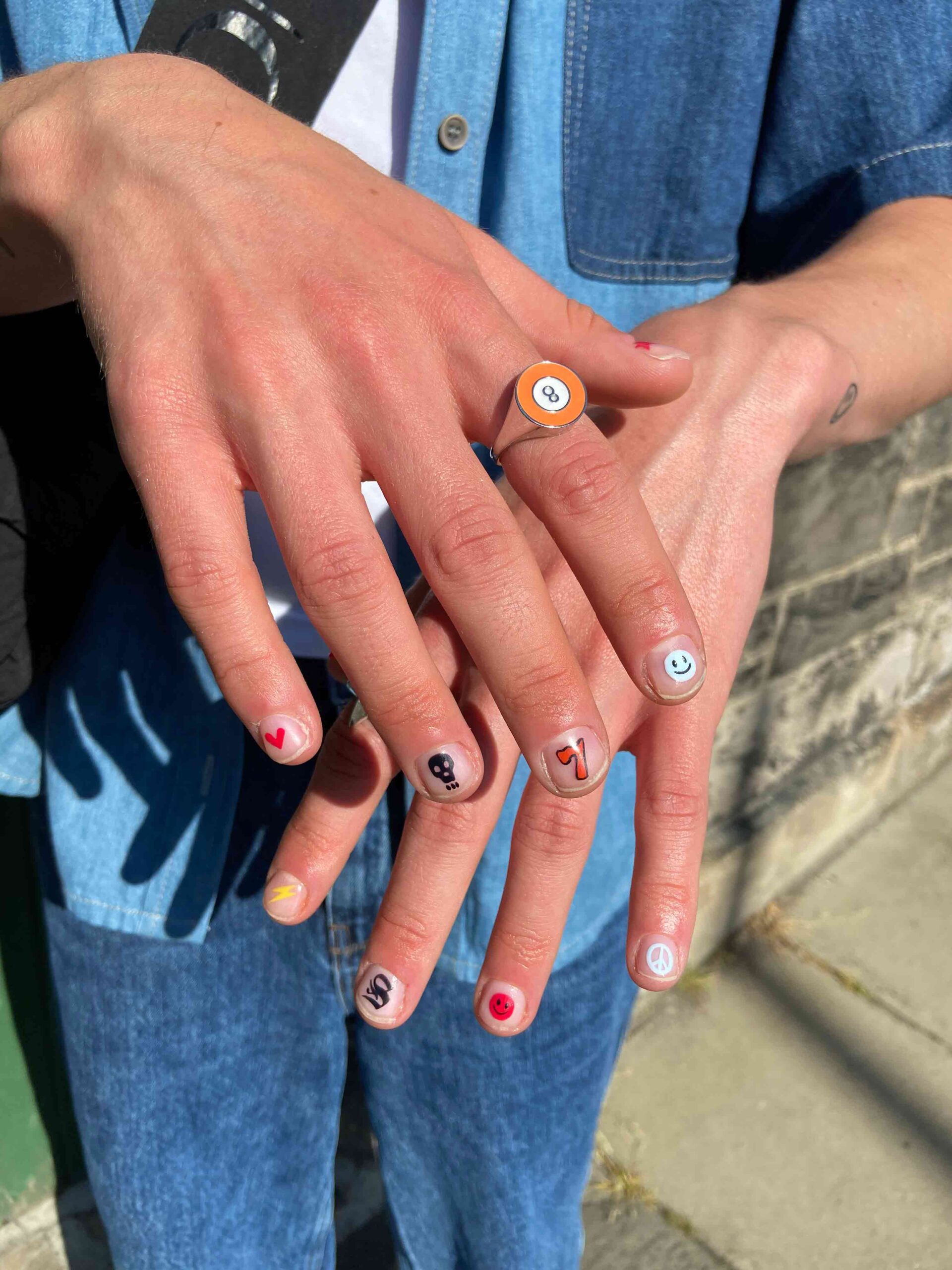
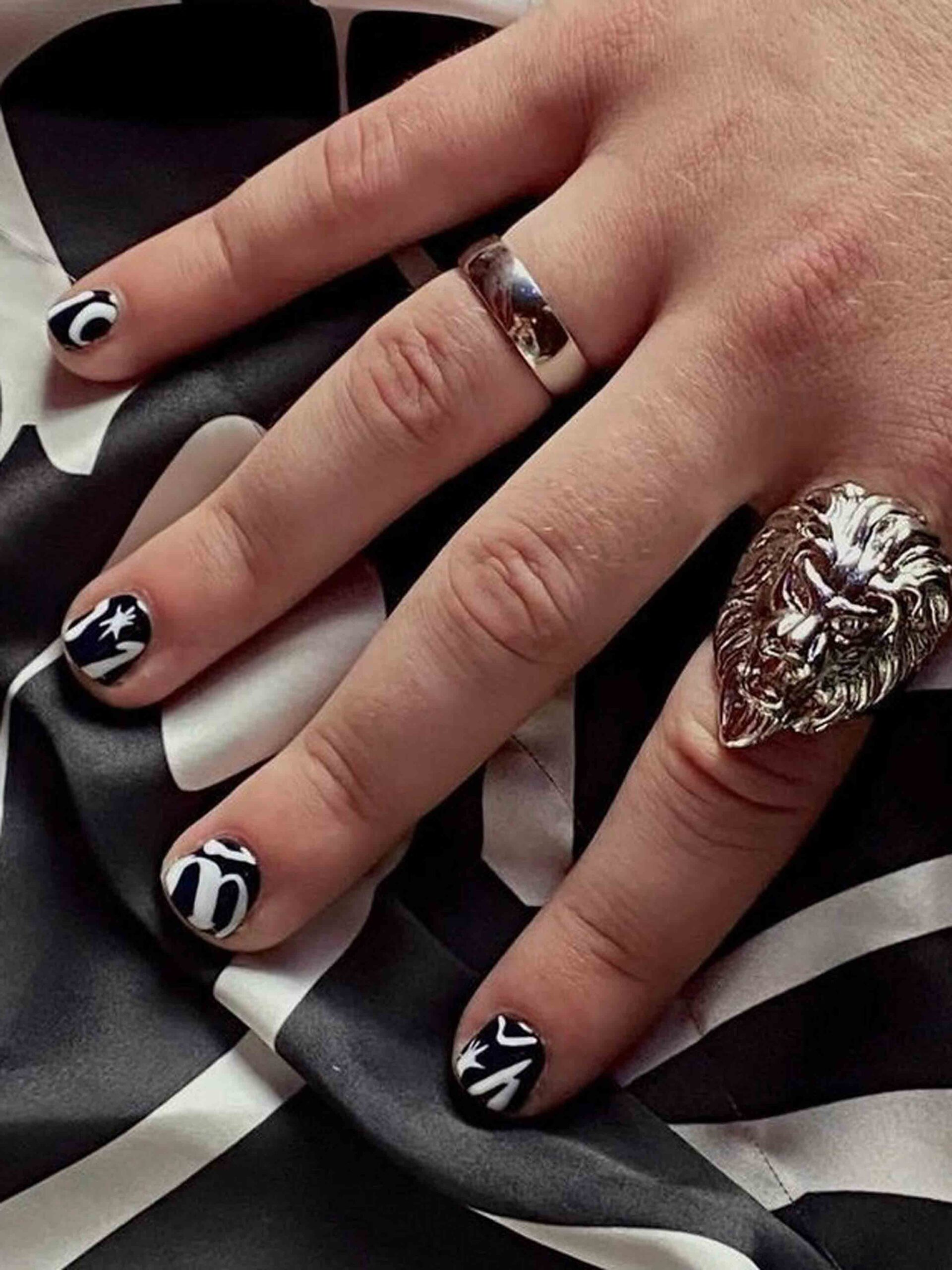
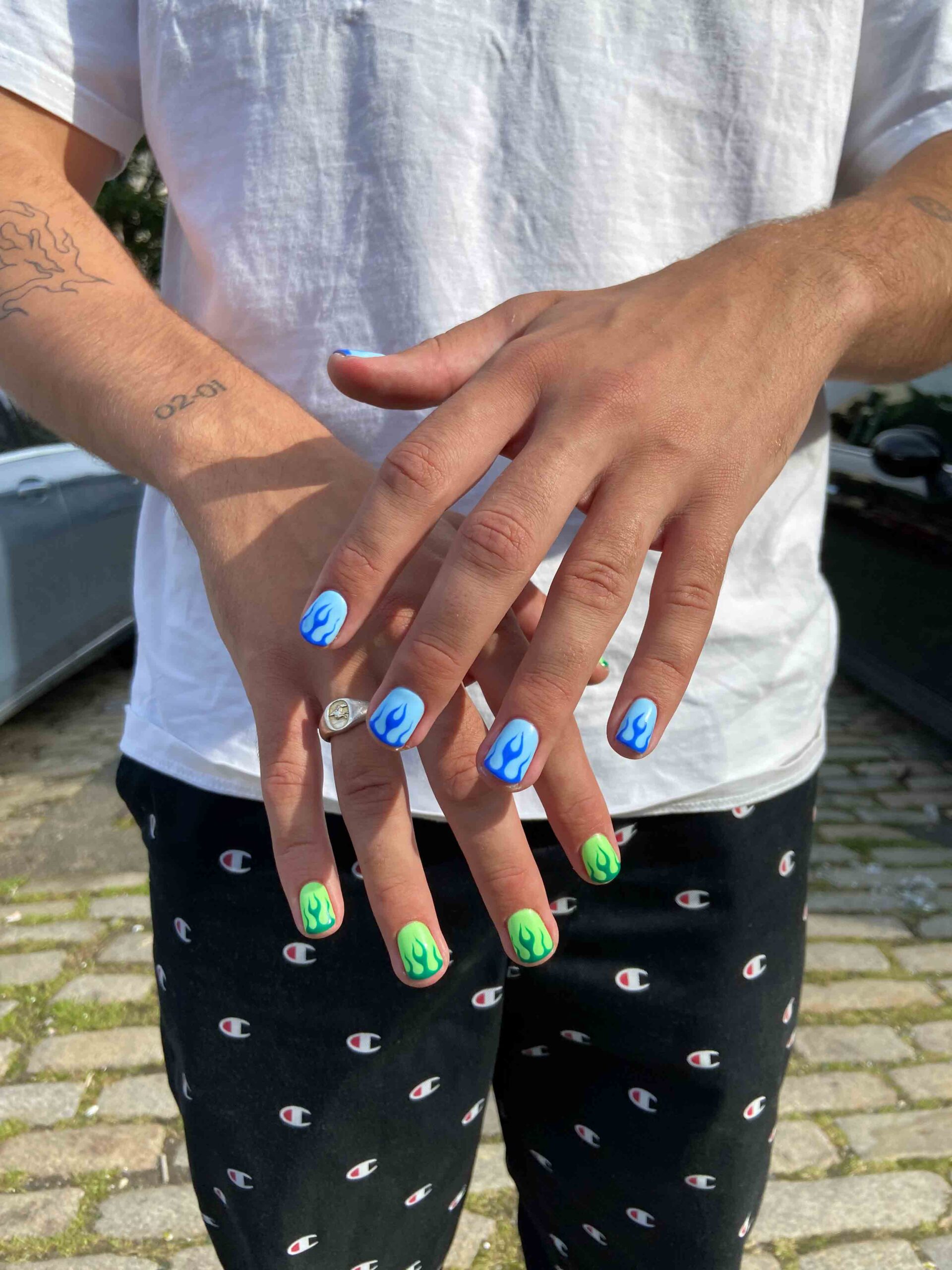
“The responses to my nails were mixed,” he continued. “The wife and kids were lovely about it while my mum just went with the flow, she’s always been non-judgmental and supportive. My sister laughed a little, but in a surprised way. That reaction actually stung at first, but she was really fine with it—just taken aback.” Although Louis’ dad decided to joke about it, wounding him a bit in the process, the enthusiast acknowledged receiving compliments from the staff in stores whenever they see painted nails on males. This, according to Louis, has translated into great conversations with people—mostly women.
“Some people at work have been great as well. There are a few women I have regular conversations about nails with, which I highly enjoy.” However, new aesthetic choice has also garnered a couple of odd looks from some men in Louis’ office. “I got a few ‘what the hell are you wearing?’ comments as well as a few ‘why?’s,” he said before introducing me to an often-inaccurate hypothesis that is rampant in the masculine adaptation of manicures: that men are mere product testers for their partners and kids. “There was a day when three different people asked if my kids painted my nails, which was fairly awkward. I also got asked if I was going to wear makeup and if I intended to open a nail bar,” Louis stated. Although the feedback was not all positive, he highlighted the absence of malicious responses from people so far. “Most people are either nice about it or don’t comment,” he added, agreeing with Duke in this regard.
A colourful history
Nail polish on masculine-presenting people is nothing new. In fact, a quick scroll through the history of the beauty practice will make you question whether history is repeating itself. Following an excavation of royal tombs, the first manicure set was unearthed in ancient Babylonia dating back to 3200 BC. At the time, Babylonian males of all classes wore nail polish, but instead of using henna, like Indians are speculated to have used prior, they used kohl. Warriors of Babylon are also speculated to have spent hours to primp and paint their nails before heading into battle.
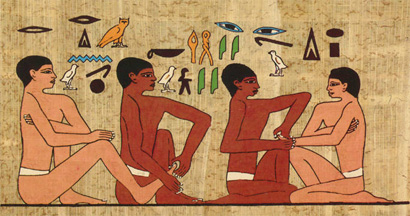
In 3000 BC, Chinese and ancient Egyptian people began staining their nails as a distinction of class and dynasty. While the Chinese combined egg whites, beeswax, Arabic gum and flower petals to create a pigment that they would soak their nails in for hours to reach a desirable effect, Egyptians preferred henna—regardless of gender. Then came Britain in the 1800s, a time when women would primarily paint their nails to signify purity and hygiene. By the 1930s, brands like Revlon were marketing red and pink polishes directly to female customers, with little evidence on how the beauty practice turned into a feminine medium of expression.
However, counterculture brought manicures back onto the scenes of the punk rock and grunge movements in the US. Here, icons like Iggy Pop, Kurt Cobain, Lou Reed and David Bowie alienated the hyper-masculine images their ancestors had once raved about while polishes gradually infiltrated the skateboarding community—where it was perceived as basic self-care. Paired with the rise of metrosexuals and the blurring lines of gender stereotypes, masculine-presenting people today have undoubtedly taken things up a notch.
“I think in the last year or two we’ve seen more of male manicures and it’s definitely becoming normalised,” said Alix, owner of At The Studio based in Edinburgh. Launching the nail studio with the aim of having her own identity in the industry, Alix is presently on a quest to help others find theirs—all the while providing opportunities to new artists starting out on their own. “This is only possible now that I have my own studio,” she explained. “I want it to be a welcoming space for both males and females as I know salons can be intimidating sometimes.”


Alix originally started off by doing one of her friend’s nails. “He was keen to have crazy nail designs from the beginning and from then I think he has really influenced more males to come to my salon for manicures,” she said, adding how she loves that her studio is currently witnessing an influx of masculine people coming in for regular manicures. When it comes to the general responses from these customers, Alix outlined how they tend to be just as excited about the beauty practice as she is. “I think stereotypically, a lot of people assume that males who get their nails done are part of the LGBTQ+ community. But in reality, male manicures are really no different from female manicures—it’s just another way to express yourself.”
When Screen Shot reached out to TJ, the mastermind behind Bicolor—a private nail studio based in Beverly Hills, California—the artist echoed his commitment to a similar mission. “One of my goals was to create a safe environment where anyone could express themselves,” he stated when asked about the motivation backing his studio. Looking back at the time TJ was working in a nail salon himself, he mentioned how some nail techs were surprised when a man came in as a customer—especially if they wanted to paint their nails with a lot of colours. “There were also times when people said they would not take services from me because I was a male manicurist. I wasn’t happy when these things happened, that’s why I always say ‘nail care has no gender’. I really wanted my clients to come and avail the services they wanted without having to worry about anyone.”
In order to analyse the demand for male manicures over at TJ’s studio, I asked the artist if the practice has witnessed a recent boom or was always a thing—merely sidelined until now. “I’m a beginner tech who has only been working in the industry for two years,” TJ said. “Even compared to when I started doing nails, I have seen that the demand for male manicures is growing.” Crediting the spike to social media as well as fashion and beauty publications, he added how more masculine-presenting people are channeling their confidence when it comes to painting their nails. “The number of male clients coming to me has increased since I opened my studio,” the artist confirmed.
The polished way forward
Let’s face it: even if masculine people have access to polish, an inclusive salon, or an acquaintance who wants to do their nails, the process can be quite anxiety-inducing. A quick Google search to find and confide in communities, in turn, would plop you into the polished grounds of r/malepolish—a subreddit dedicated for men (including cis, trans and male-identifying people) “to share stories, post photos of their polished nails and discuss anything related to nail polish or its relation to gender expression.”
Also welcoming those for whom nail polishes might pose challenges—like genderqueer, genderfluid, androgynous people and more—a pinned post on the subreddit efficiently summed up all the red flags and advice one needs for a headstart into the beauty practice. “First time? New but not confident? How to be safe? Start here,” it reads, listing pointers for all age groups interested in manicures. One piece of advice is to ‘start small’. “Clear coats, one nail, more ‘traditionally male’ colours like black and grey are great options to start,” the post continued, which made me wonder if there are any notable variables when it comes to masculine adaptations of nail art.


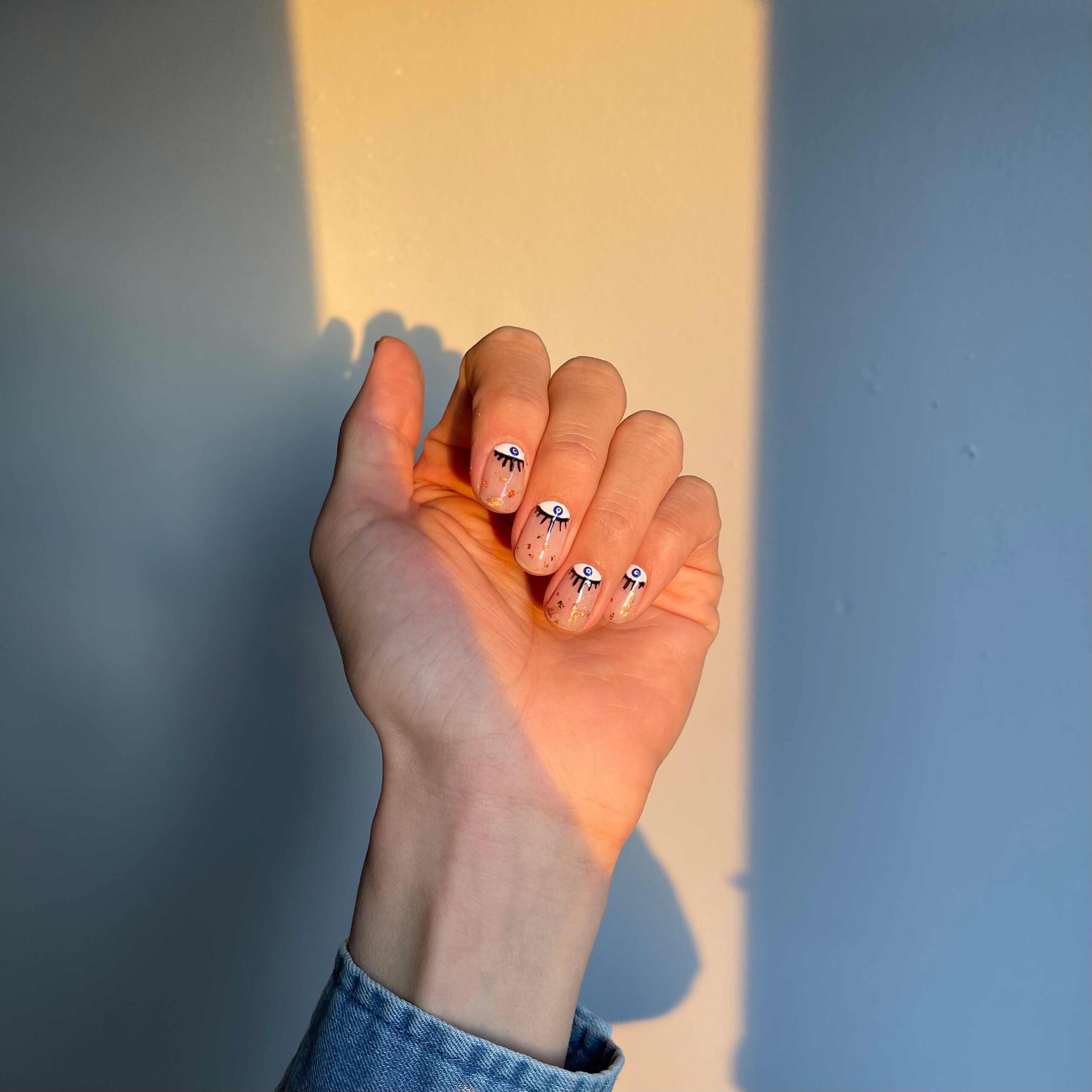
“When men come to my studio for the first time, they usually want a clear base (or natural colour) and maybe some designs,” TJ admitted upon my prodding. When the artist first started giving himself manicures, he simply shaped his nails and bestowed a clear base and top coat on them. After perfecting his hand and manicures, however, he started venturing into small designs to top off the clear base. “Now, most of my male clients want to paint their nails with different colours and do all sorts of fun things on them,” he said. Most of TJ’s male presenting clients have also admitted to feeling different, in a good way, while getting their first manicure with design and colours across the spectrum.
Alix, on the other hand, highlighted how preferences usually depend on specific themes and the time of year they’re getting their manicures done. “They tend to have a rough idea but give me free reign to be creative which is so much fun,” she explained. “Recently, I had one of my clients bring a scarf he was wearing to a fashion event in London and he asked me to do a design inspired by it which was really cool!” According to the expert, her clients go full out with the nail art most of the time—with no restraints holding them back from having fun in the process. “I do find a lot of my male clients also have their favourite colours that they tend to always get, almost like a safety blanket of knowing they will love what they get and it goes with their vibe.”
Interviewing all four enthusiasts actively engaged in the ‘men-icure movement’ of 2021, however, made me question a controversial notion: is explaining nail polishes on masculine-presenting people a gendered concept in the first place?
“I think right now it is a gendered concept by virtue of the reaction they receive,” Louis echoed his thoughts. “But do I believe that they should be? I suppose it depends on your concept of what it means to be ‘feminine’ or ‘masculine’. I’m actually okay with my nails being considered ‘feminine’.” Likewise, Louis admitted to being comfortable in mixing his masculinity with his femininity. “It’s part of my personality and expressing that via some nail art is fun,” he continued. However, the enthusiast believes nail polish doesn’t have to be a feminine medium of expression in itself. “We are just used to seeing it mostly on women, so it stands out on men. To me, the only way that changes is by it becoming commonplace for men over time—although it can take generations for these social norms to change.”
When asked about how we could cross the threshold of ‘genderless beauty’ and reach an ideal place where aesthetic choices aren’t questioned, Duke believes everything starts with how we raise the next generation. “My kids are much more open and understanding of diversity than I was at their age, and I suspect the next generation will be better,” he said, highlighting the importance of role models in the process. “A few celebs have worn polish, which is nice—but I’d like to see a politician or executive do so.”
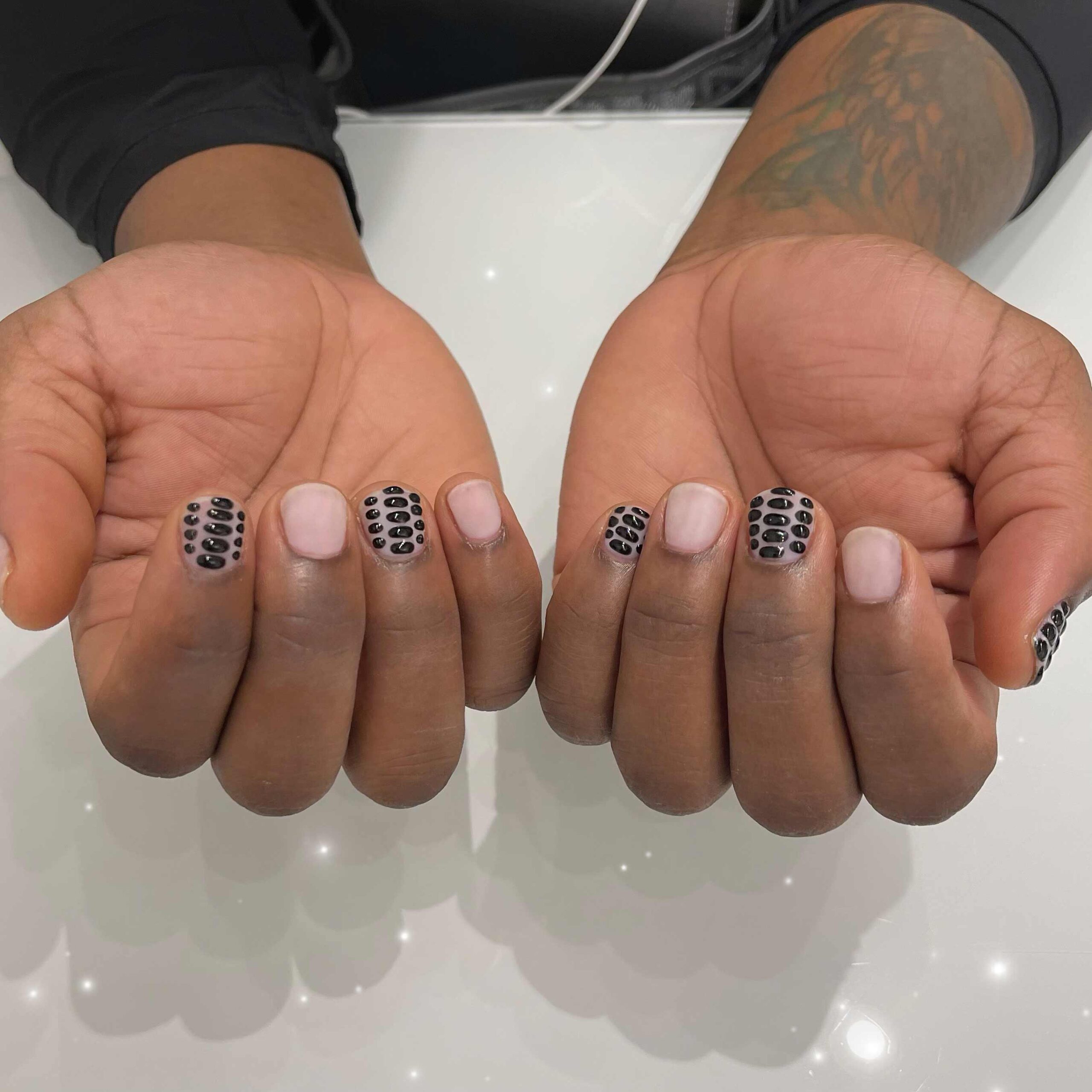

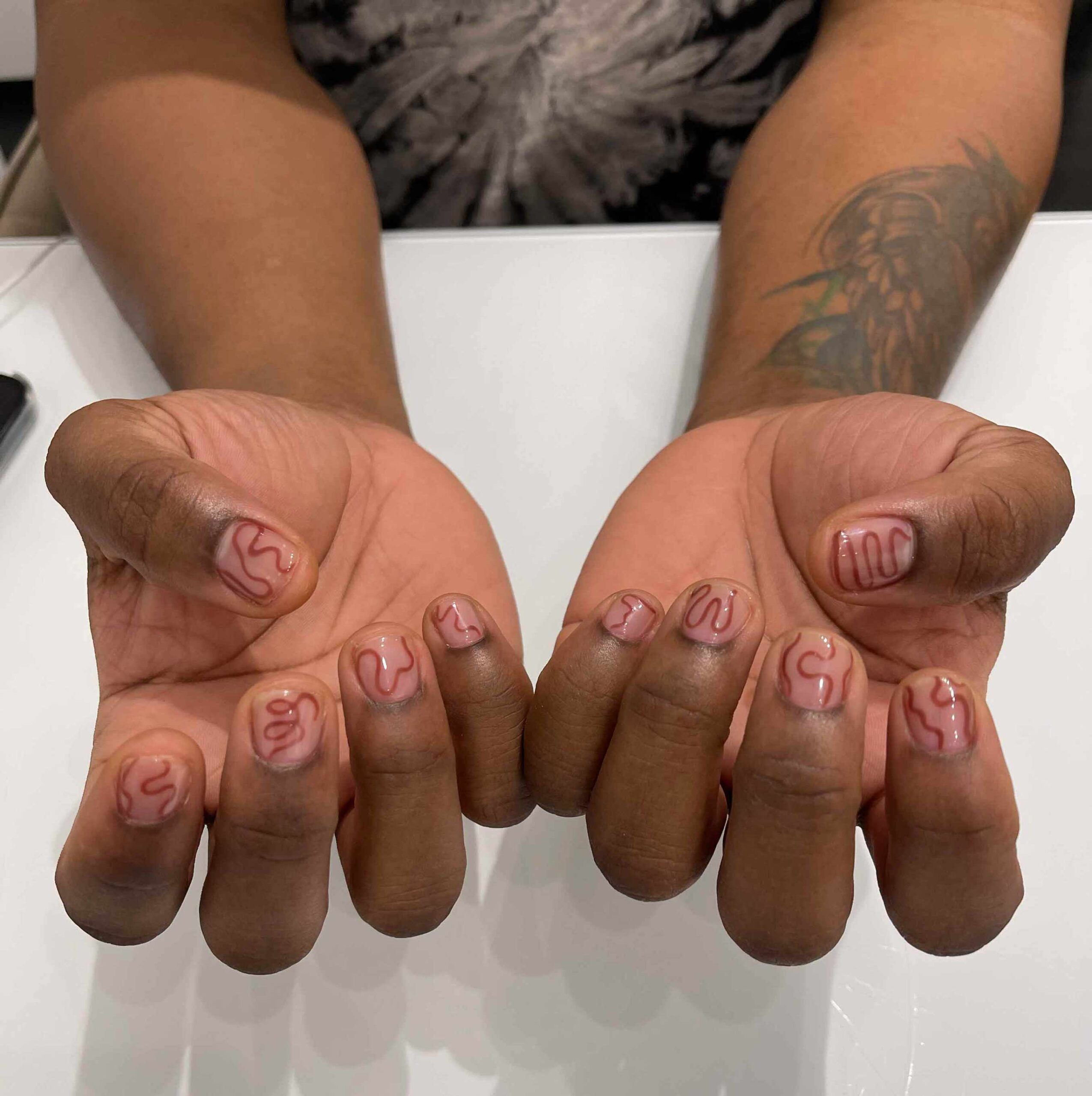
“Everyone is happier after a freshly done manicure”
Despite the traction male manicures have been gathering, Duke is still looking forward to meeting others with painted talons organically. “Certainly, it appears to be more popular but I’m yet to bump into any guy on the street with polish on their fingers,” he said, outlining his assumption that a lot of males may just have pedicures at the moment. “While I like the progress, I think we need more,” he summed up. As for Louis, the enthusiast mentioned how he doesn’t follow trends or celebrities, thereby having no clue about the recent boom of manicures. “I’ve not seen many men with painted nails, so I would say it’s still a fairly rare occurrence at the moment. But I’m all for it if it does become more popular, I’d get fewer odd looks.”
While we wait for all of these insights to dry before applying the next coat of insider information, let’s look at some of the advice all four enthusiasts have in store for those who are still on the fence about dipping their nails into the polish pool. “Start when you’re ready and feel comfortable with it,” TJ said. “There were a couple of times when I hid my hands in my pockets when I didn’t feel safe entering some places. For some reason, I felt like I had to hide at that certain time—probably because I grew up in a society that didn’t allow men to paint their nails.”
Duke added to this dilemma by acknowledging the presence of certain spaces where a male-presenting individual is not safe to try nail polish. “Think very conservative countries or homophobic hate-filled households,” he explained. At the same time, however, he believes some of the anxiety is in our heads. “Our friends and family would accept us for who we are. It’s just paint.”
When asked about how clients can brace and deal with their own anxiety and social pressure while expressing themselves, Alix began by stating how first manicures, in general, can be daunting because you don’t know what to expect or what to ask for. “I think choosing a nail salon that gives you friendly vibes—or even better, if it’s recommended to you—is a good start. Remember, no one is judging you. Staying in your comfort zone for your first mani is a good way to go.” The artist additionally mentioned the case of a male client, who came for his first set and only wanted gel polish on a couple of his nails to ease himself into the beauty practice. “Once we got going, he felt a bit braver and decided he wanted all ten nails done,” she exclaimed.
Alix also appreciates the fact that her clients feel comfortable being honest with her about how they feel throughout the service. “I can’t speak for other salons but for me, I treat all my clients like my friends. I have created so many amazing bonds with people through nails, and although it’s a profession, I don’t see why it can’t be a fun personal thing too.”
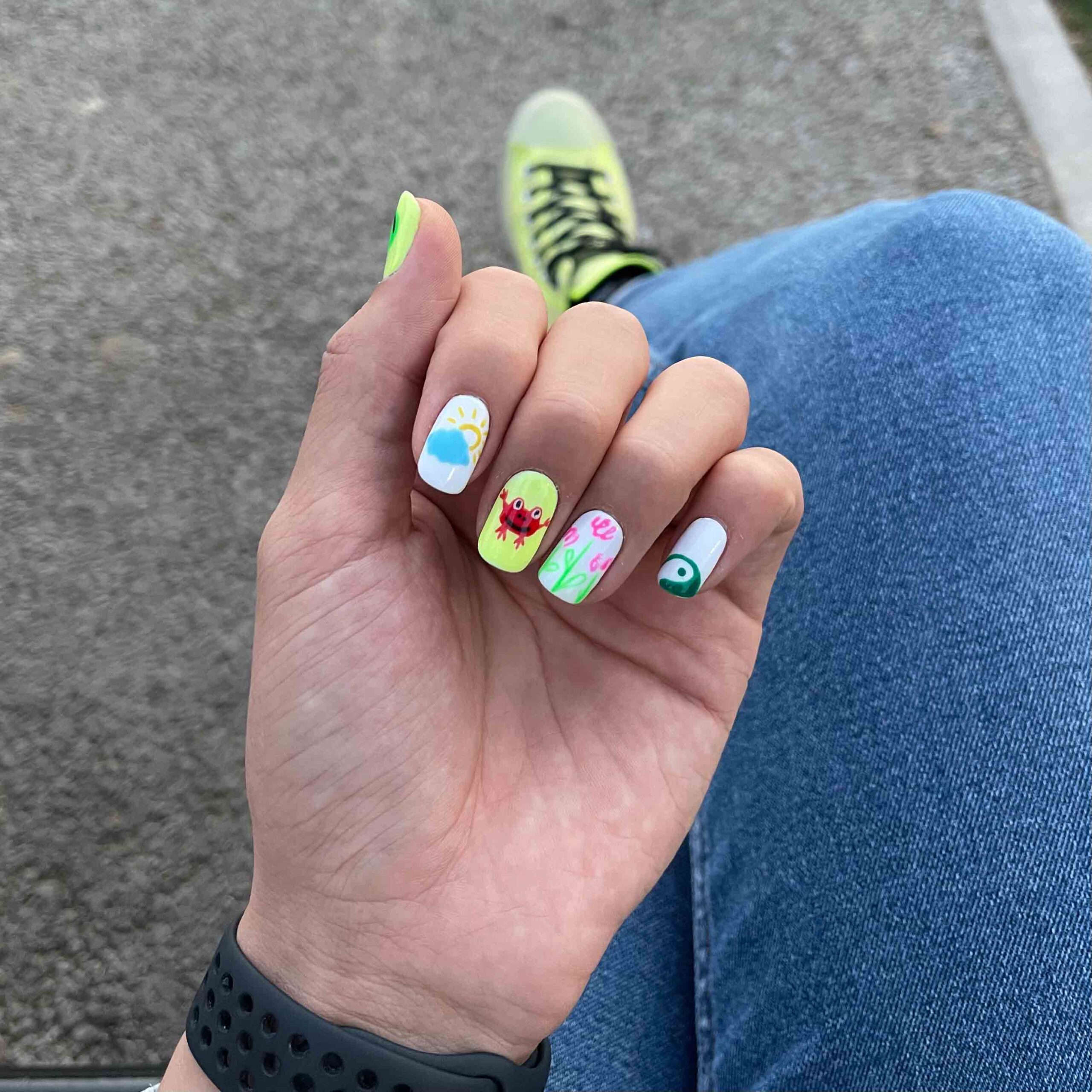

As for Louis, the enthusiast stressed the importance of communities that can help you manifest confidence in the colourful medium of expression. “Getting advice from those who do their nails can be really helpful,” he said, provided you know people who you are comfortable asking for help. “Just be prepared because you will get comments. If asked why, I always just say it’s because I enjoy doing it.” Louis also advises to start small and try wearing them out to your mini shopping sprees. “You might be surprised by the positive reaction you get. Just give people time to get used to it and after a while the people you care about will just see it as a ‘normal’ feature on you.”
Over to Duke, the 64 year-old remembers one specific interaction he had with another enthusiast on r/malepolish. “There was a guy who asked me where I got my manicure done. He was thinking of it, so I introduced him to my nail tech Tracy. He went and got a clear coat, then black and now he’s into purple. So he’s taking baby steps while I went straight to hot pink on my fingers!” En route to 65 in a few weeks, Duke wishes he had launched his love affair with nail polishes earlier. “I’m having a blast and I hope this helps someone feel comfortable about being themselves,” he concluded. After all, nail polish is truly for everyone who has nails and, if you ask me, everyone could use some colour in their lives at the moment.





